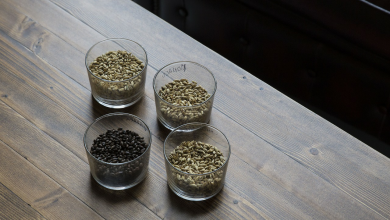Simple Beer Preservation Techniques Every Brewer Should Know

Adopting the right beer preservation techniques can be immensely useful. At times, it can be the only thing that will make your brewery business stand out from the rest.
As we all know, preservation is a very important technique that helps to prolong the lifespan of any edible product. For some alcoholic beverages, like wine, preservation is simple and straightforward. They can be preserved using the most basic preservation methods and still retain their taste after many years or even decades. However, beer’s shorter shelf life implies that things can quickly go awry if necessary preservation plans and precautions are not in place.
Therefore, as a brewery owner, your focus should not just be on brewing a better beer, but also to find a better way to preserve and sustain your beer for a long time. This will make you stand out from most beer industries that are only interested in brewing beer with rich taste to exploit the market rather than preserving their beer products.
So what methods or requirements are necessary to preserve your beer and keep it in a fresh state for as long as possible? In this article, we will highlight some very simple tips, methods, and techniques that every brewery owner can take to maximize the shelf life of their beer and win the heart of every craft beer lovers.
Beer Preservation Techniques: How to Keep Your Beer Drinks In Their Best State
For most brewery owners, the time is right, and the market is booming. Whether you produce beer to meet a specific demand or you produce in large quantities for the general beer market, odds are good that you are still making great sales. However, there are times when the market changes suddenly without any prior indications. At this point, you may end up brewing more beer than needed. But what steps will you take to keep the excess beer drinks at their best while you hope to get them to the market as soon as possible? Like most people, you may just decide to go online and check for the simplest beer preservation techniques to follow and adopt. However, if you learn from non-credible sources, you may find yourself in a worse situation than you were before.
The thing is, there are several ways to preserve your beer products. But some of these methods are overly expensive and labor-intensive, especially for a micro-brewery owner. But if you are looking for simple and easy-to-follow ways and techniques that will equally help preserve your beer, you can apply these tips:

Brew According to Your Target Market
Here is the thing about beer preservation: It is a necessary act that every craft brewer must adopt and practice. As the beer industry continues to boom, demands will continue to increase. This means that you may need to brew a large quantity of beer to meet up the massive market demand at times. At this point, it becomes essential to preserve the leftovers, either for later supply or for personal consumption.
If the brewer deploys a poorly structured preservative technique, the beer will not only lose its taste, but also become sour and lose its value. The situation may even become worse if you lack the important storage and preservation tools that can enhance the preservation process.
That is why it is important to analyze your market size and its corresponding production limit before you commence your brewing process. Although you never can tell exactly how high or low market demand can be, you can still make plans for your next brew with the experience you had in your previous supply.
Store Your Beer at a Suitable Room Temperature
While you make plans to maintain the freshness of your beer, endeavor to consider the temperature in your storeroom. When the temperature of the room is too hot, your beer can lose its taste and flavor. Every beer can retain its freshness for as long as possible if stored at the appropriate room temperature.
Moreover, you can steer clear of ingredients that may negatively impact the taste and flavor of your beer products. While selecting your beer recipes, you need to make enough inquiries to be sure whether or not they will skunk your beer or bring out its full taste.
Keep Your Beer Away From Direct Light
As a brewer, you have to protect your beer from sunlight and any other light rays that can penetrate the storehouse vessel and alter the flavor of your brew. Some ultraviolet light rays come with high penetrating power that can frustrate your preservation effort. Preferably, you store your beer in a cool, dark corner to enhance its taste and flavor and keep it at its best for a long time.

Store Your Beer Bottles in a Vertical Position
When you position your beer bottles vertically, the yeast content will always remain at the bottom layer of the bottle. This action will enable your consumers to drink a cleaner beer with less yeast pour. However, when you decide to store the bottles horizontally, the yeast content of the beer will remain in the middle. With time, it will start fluctuating before it eventually moves to another location within the bottle. Because of this, the yeast may not be able to settle very well at the base of the drinking bottle. While yeast does not pose any health risk, it can throw off the beer’s flavor and put off your consumers in the long run.
Apart from the fact that most beer lovers prefer to drink their favorite alcoholic beverages from a suitable container, beer preserved in aluminum cans also retain the beer flavors longer enough than bottled beers. While bottled beers may let in some rays of light – no thanks to its transparent body, canned beers are completely sealed away from direct light.
However, you can store your beer in bottles, but you have to keep the bottles away from light reflections.
Overall, as a brewer, you have to adopt the right beer preservation techniques to sustain the quality of your beer and enhance your brewery business. By doing this, you can boost the economic value of your brewery and strengthen your brewing potential.



